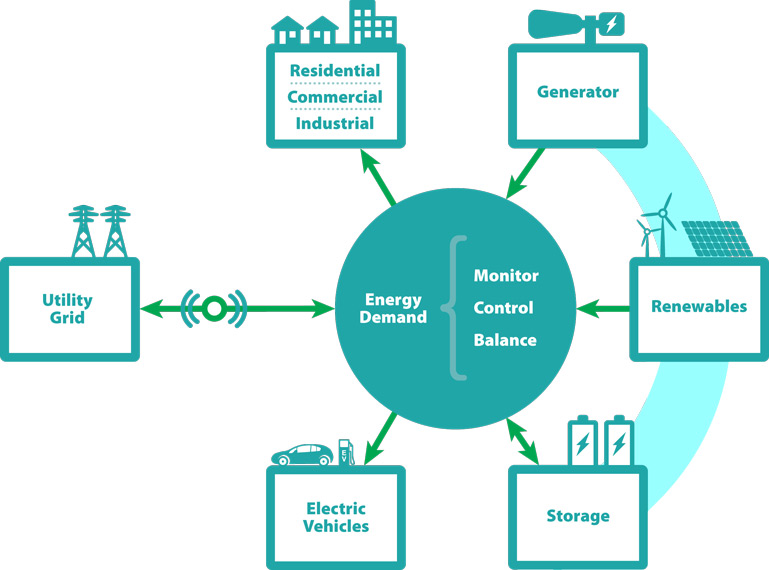Micro Grid And Smart Grid
A microgrid is a small-scale power grid that can operate independently or collaboratively with other small power grids or even the main grid. Microgrids are typically supported by generators or renewable sources of energy. They are often used to provide backup power or supplement the main power grid during periods of heavy demand. Microgrids are also used to ensure a continues supply of energy for highly critical projects. The flow of power in most grids today is from the main grid to your homes but microgrids enable a multi- directional flow of power part from the main grid to your home, it enables flow from microgrids to both your home and back to the main grid.


Distributed Energy Resources
Current energy resources are coal, gas, nuclear, solar and wind also we know that no energy means no product and no product means no revenue. We are going to find a way which achieve us to the better way of generating energy which is affordable, reliable and clean, we can reach to this purpose by distributed energy resources which is more efficiently, creating onsite and storing for later use.
The renewable energy (wind and solar) is limited in capacity to generate energy, microgrid must continually managed fluctuation in demand and generation to maintain 60 Hz frequency which is requirement for maintain grid ability
Smart Grid
Smart grid means adding sensor and software to the existing grid that would give utilities and individuals new information that would help them to understand and react to changes quickly so the system will be more sustainable and efficient by making more inform decisions about how we use the electricity. In general it describes an electrical grid that is integrated with a computerized (which means 2way communication network)
It can use real-time monitoring and tracking to edit and tune itself to an optimal state of performance, estimating problem areas and service disturbances and delivering electricity evenly (even during peak-usage hours). It will permit more efficient transmission of electricity, lower operating and kilowatt costs, quicker restoration of electricity after outages and reduced energy use during peak-demand hours.

